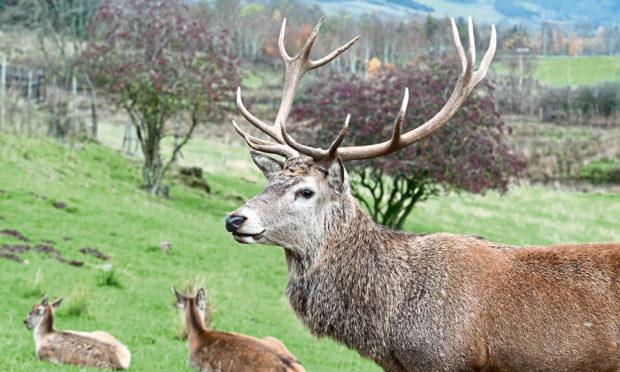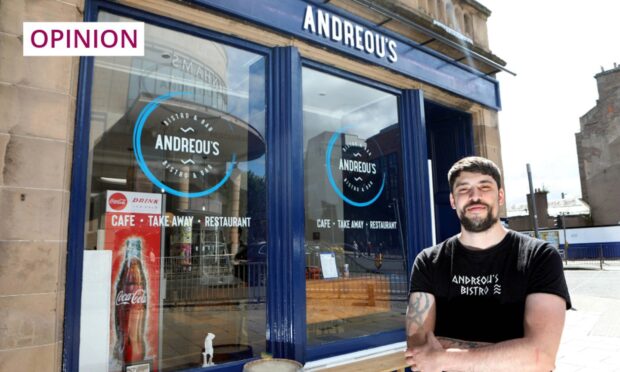I like forest and red deer together. So do the red deer. They are forest animals. A Scottish forest without red deer is only halfway towards being a forest. Likewise the forest without wildcats or wolves.
Around 275 years ago, the Gaelic poet Duncan Ban Macintyre, Fair Duncan of the Songs, composed a 550-line poem, In Praise of Beinn Dorain. He did not write it down because he could not write, he composed it and memorised it. Sorley MacLean and Iain Crichton Smith both translated it into English, but I have a particular affection for the translation by the Edinburgh writer Albert Mackie, my late-lamented friend. He gave me a signed typed copy about 40 years ago. I still have it. A sample:
Its rough little passes
Are lush with tall grasses
Its richness surpasses
The tamer low country;
Bud-rich and clustered
With slopes and plains marled,
With blooms clean and blushing
And many rich colours
And sweet green abundance
The forest’s apparelled…
And then:
In herbs and in verdure
The ben is so healthy…
The mountain at the poem’s heart stands at the entrance to Glen Orchy, centrepiece of his native land. He became a stalker, but he was a stalker with an eye and a heart that appreciated all of the mountain’s wildlife, and especially the deer and the forest, the two together. He loved foxes, hated sheep.
Beinn Dorain, like so much of the country west of Rannoch, has been wrecked in those 225 years. Yet it was once a country of Scots pine, birch, oak, aspen, willow and alder. The woodland would have clambered in varying densities to around 2,000ft.
However, if you go into today’s Glen Orchy, much of it given over to a relentless monoculture of spruce, you find remnants of all of these trees. They cling on where the forestry has not quite killed them off. On Ben Dorain itself there is barely a tree. The ben is so unhealthy.
Yet scratch the surface of the land, say where a drainage ditch has recently been dug, and there are the roots of what’s been lost, headstones to a slaughtered ecology. The deliberate land use policy of Highland estates has done this, and it still does over much of the country. For all that, its priorities are essentially Victorian. They like to use the very words the Victorians invented: “deer forest”. The only thing that grows branches in a deer forest is a stag antler.
The natural force of wolves
The deer, when they were a natural component in nature’s scheme of things, were held in check by natural forces, notably wolves.
We have seen from the last 25 years in Yellowstone exactly how that works, thanks to the most intensively studied wolves anywhere in the world and their transformative effect on huge elk herds. Reintroduction in 1995 began an ecological phenomenon, the almost unimaginably benevolent ecological revolution that has astounded even the most ardent pro-wolf biologists.
Meanwhile, on mainland Europe, the wolf has spread through the 21st Century back into every country. A modern, progressive, northern hemisphere country like Scotland on the cusp of what may be the best opportunity it will ever have of reclaiming the independence it lost 300 years ago, was never better placed to implement the wolf reintroduction and a comparable ecological revolution. Otherwise they won’t come unless we build a land bridge (not the worst idea while team Boris demonises Europe and trumpets a no-deal).
In the spirit of pilgrimage
No one knows exactly when In Praise of Ben Dorain first saw the light of day, but I like to go at the time of the red deer rut in something of the spirit of pilgrimage, not to Ben Dorain itself but to Loch Ba a couple of miles away, and its pinewood shore called Doire Darach. It’s a strange name. Doire is Gaelic for an oak copse; darach is an oak tree. But Doire Darach is a pinewood, with a few larches and a lot of birch. Just to the south-west is another pinewood at Glen Fuar and to the north-east yet another at Crannach.
Scots pine-dominated forest cover was nature’s preferred option hereabouts when the bens were so healthy.
The particular attraction of Doire Darach is that it stands on the shore of Loch Tulla and the lovely wetland flourish at its west end, and it looks across to the mighty Stob Ghabhar.
I was there just a few Octobers ago when six stags were calling from six different compass points, although I could see none of them. It took a long stillness for me to realise that they were all closing in on the loch. Finally, a 10-pointer with a grey muzzle and neck appeared splashing across the river to the west, climbed its bank on to a level patch of turf where it unfurled an unearthly roar, which was answered at once from within the pine trees; they were the voices of vanquished and victor in that order.
I like forest and red deer together and so do the red deer. So did Fair Duncan of the Songs.










